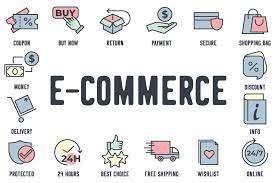In the dynamic landscape of e-commerce, Shopify stands as a beacon for entrepreneurs seeking to establish and expand their online presence. The platform’s user-friendly interface and robust features have empowered countless businesses to thrive in the digital realm. However, mastering Shopify is not just about setting up a store; it’s about strategically scaling your online business for sustained success. In this article, we unveil nine essential strategies to achieve Shopify mastery and take your online venture to new heights.

- Optimize Your Store Design for Conversions:
Your online store is your digital storefront, and its design plays a pivotal role in customer engagement. Invest time in creating a visually appealing, intuitive, and mobile-responsive design. Ensure easy navigation, high-quality images, and concise product descriptions to enhance the overall user experience. A well-designed store not only captivates visitors but also encourages them to convert into customers.
- Leverage Shopify Apps for Enhanced Functionality:
One of Shopify’s strengths lies in its extensive App Store, offering a myriad of tools and plugins to augment your store’s functionality. Explore apps for marketing automation, customer support, inventory management, and analytics. These apps can streamline operations, automate repetitive tasks, and provide valuable insights, enabling you to focus on strategic growth.
- Implement a Robust SEO Strategy:
To scale your online business, visibility is key. Optimize your product listings, meta descriptions, and images for search engines. Regularly publish high-quality content, such as blog posts and product guides, to establish your store as an authority in your niche. Utilize Shopify’s SEO features and integrate with Google Analytics to track and refine your strategy over time.

- Harness the Power of Social Media:
Social media platforms are not just for personal connections; they are powerful marketing tools. Integrate your Shopify store with social media channels to expand your reach. Create compelling content, engage with your audience, and run targeted ads to drive traffic and conversions. Platforms like Instagram and Facebook offer seamless integration with Shopify, allowing customers to shop directly from your social media profiles.
- Personalize the Customer Experience:
Building a loyal customer base is crucial for long-term success. Leverage Shopify’s customer data to personalize the shopping experience. Implement features like recommended products, personalized discounts, and abandoned cart recovery emails to enhance customer retention and satisfaction.

- Optimize for Mobile Commerce:
With an increasing number of users shopping on mobile devices, it’s imperative to optimize your Shopify store for mobile commerce. Choose a responsive theme, test the user experience on various devices, and ensure that the checkout process is smooth and user-friendly. Mobile optimization not only improves user satisfaction but also positively impacts your search engine rankings.
- Implement a Strategic Pricing Strategy:
Pricing is a critical factor that influences customer behavior. Analyze your costs, keep an eye on competitors, and strategically price your products. Consider offering discounts, bundle deals, and loyalty programs to incentivize repeat purchases. Regularly review and adjust your pricing strategy based on market trends and customer feedback.
- Streamline Your Fulfillment Process:
Efficient order fulfillment is essential for customer satisfaction. Explore Shopify’s built-in fulfillment features or integrate with third-party logistics providers to streamline your shipping process. Provide transparent shipping information, offer multiple shipping options, and continuously optimize your fulfillment strategy to meet customer expectations.
- Invest in Analytics for Informed Decision-Making:
Data-driven decision-making is the cornerstone of successful e-commerce. Leverage Shopify’s analytics tools to track key metrics such as conversion rates, customer acquisition costs, and average order value. Use this data to identify trends, understand customer behavior, and make informed decisions to optimize your store for growth.
Conclusion:
Mastering Shopify involves more than just setting up an online store; it requires a strategic approach to scaling your business. By optimizing design, leveraging apps, implementing SEO, harnessing social media, personalizing the customer experience, optimizing for mobile commerce, setting strategic prices, streamlining fulfillment, and investing in analytics, you can position your Shopify store for sustained success in the competitive world of e-commerce. Embrace these strategies, adapt to market dynamics, and watch your online business thrive on the Shopify platform.


